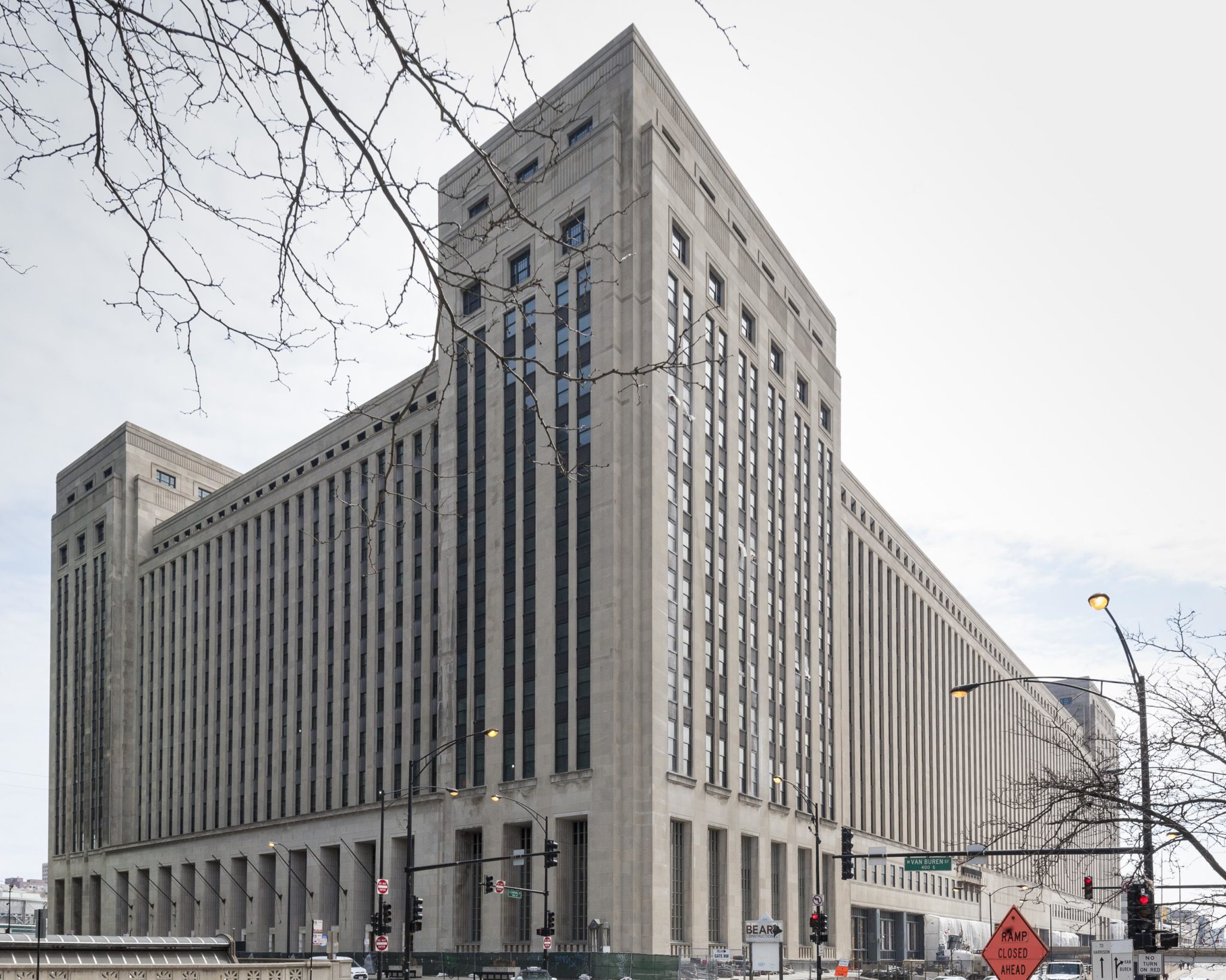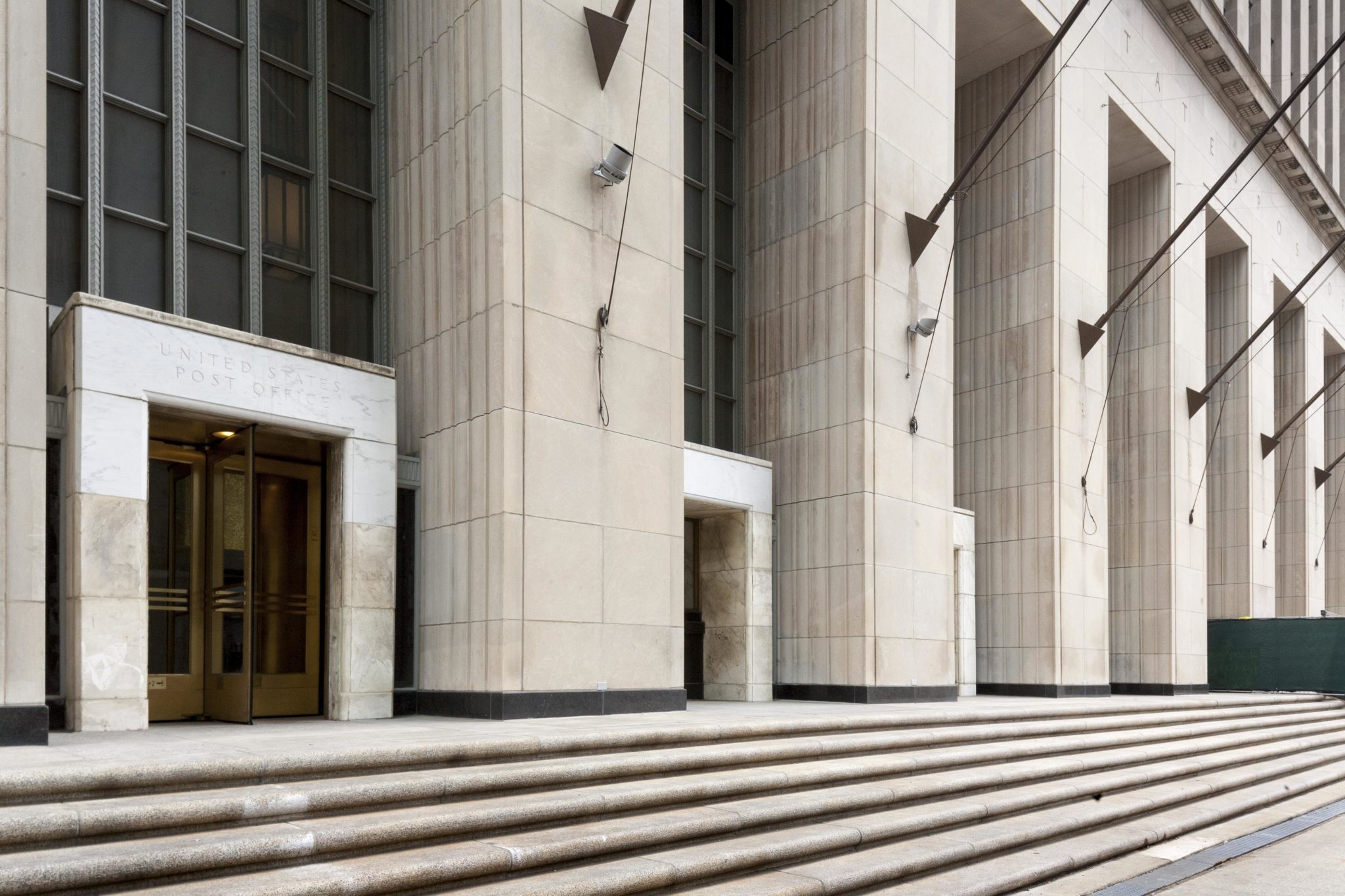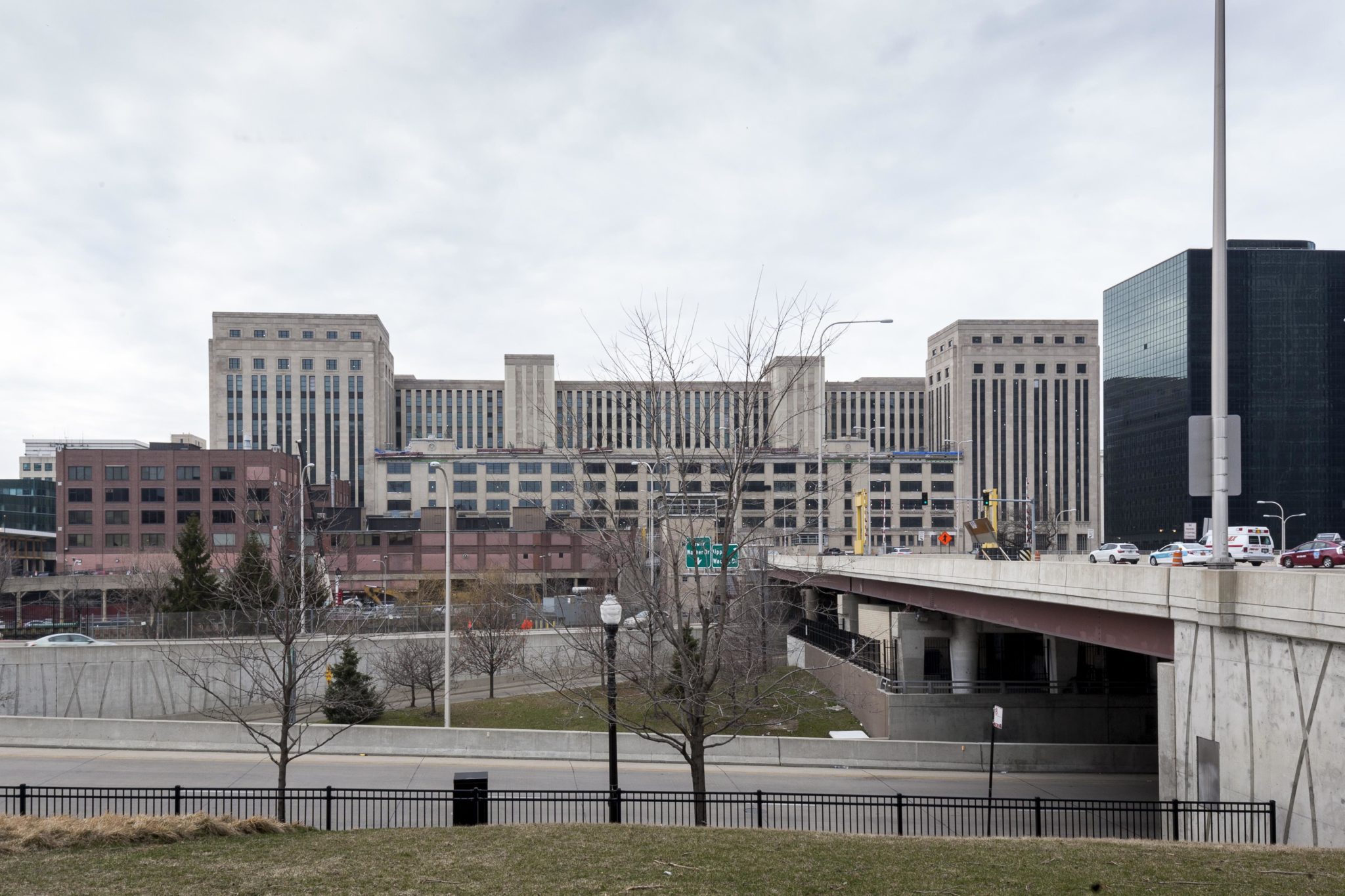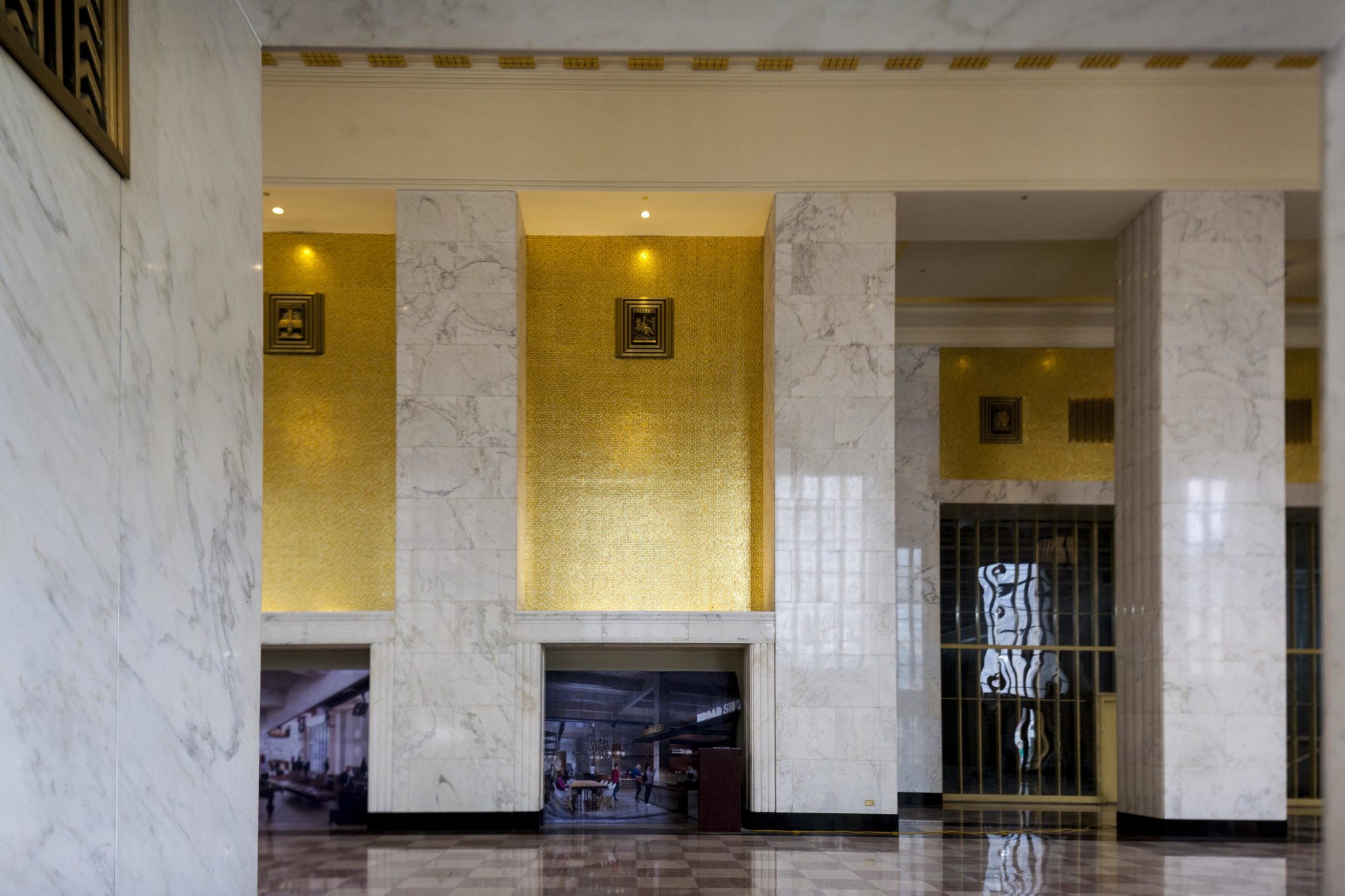Preservation Efforts
Since purchasing the massive structure, 601W has worked with global architecture firm Gensler to restore the Art Deco icon to its former glory. Its $292 million rehabilitation will transform the former Post Office into a hub of retail and office space, including the addition of a food hall, three-acre rooftop terrace, public Riverwalk and 2,400 new windows.
Billed as the largest adaptive reuse project in the nation, the project is complex and will depend on a careful arrangement of private investment, public protections and historic tax incentives. As with other large projects in Chicago, like the Uptown Theatre and Old Cook County Hospital, the federal historic tax credit has proven to be critical financing tool for this complicated redevelopment. Another important step forward for the project occurred in April 2018, when the City of Chicago officially designated the building a Chicago Landmark, which provided an added measure of protection as well as additional economic incentives through Chicago’s Class L Property Tax Incentive. Taken together, these tax incentives, along with a dedicated team of professionals and years of advocacy work, helped the 601W redevelopment plan succeed where others had not.
By summer 2018, the elaborate lobby had been “fully restored to its original Roaring Twenties extravagance,” featuring original brass medallions, lighting features, revolving doors and ornamentation that had been put into storage when the complex closed over 20 years earlier. Later in 2018, Walgreens announced it would become the first tenant of the newly redeveloped building, moving 1,800 employees to a redeveloped 200,000-square-foot space within the building. Soon after, Ferrara Candy announced it would also be moving its headquarters to the Old Main Post Office. As additional tenants line up for space in the iconic building, Landmarks Illinois and preservationists across the state are looking forward to the 2019 reopening of the Old Main Post Office after a long but rewarding struggle.
(Photo credit: Liz Chilsen)




